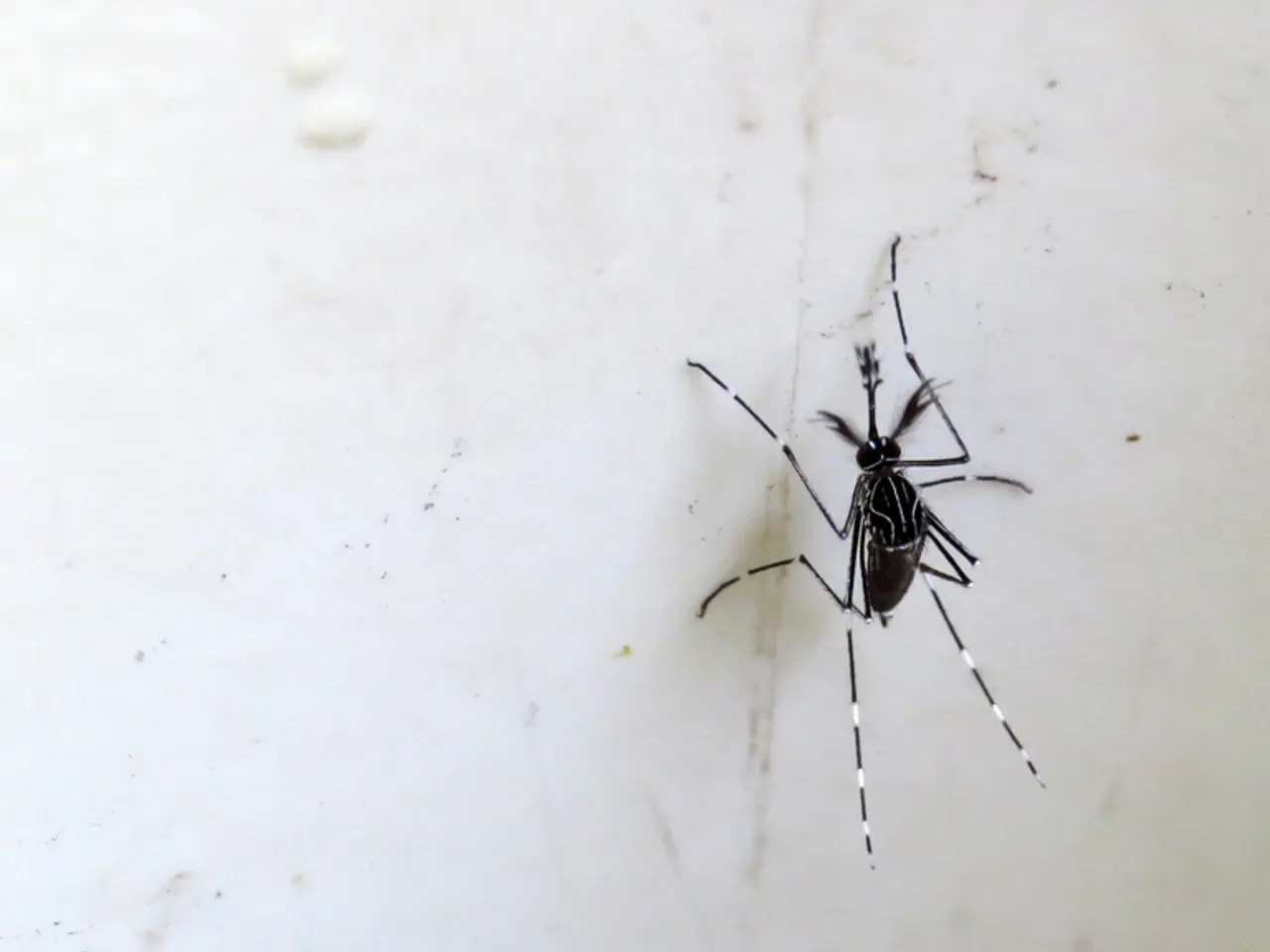Mosquitoes of the tiger variety are capable of reproducing within a bottle cap.
Controlling the Spread of Asian Tiger Mosquitoes in Neustadt, Dresden
The Neustadt district of Dresden, Germany, is currently battling an invasive species: the Asian tiger mosquito (Aedes albopictus). To combat this issue, key measures have been implemented to prevent and control its spread.
- Eliminate breeding sites: In urban environments, Asian tiger mosquitoes breed in stagnant water found in various containers such as buckets, flowerpots, clogged gutters, tires, and other vessels. Removing standing water around homes is crucial to disrupt their life cycle. Regularly cleaning birdbaths and changing water sources as frequently as possible will also help prevent breeding.
- Personal protection: Wearing long, light-colored clothing, applying insect repellents that contain DEET, Citriodiol®, or Icaridin on exposed skin, and installing window and door screens can reduce mosquito bites. Since Asian tiger mosquitoes are active from sunrise to sunset, avoiding mosquito-dense areas during daytime helps as well.
- Community surveillance and reporting: If you spot Asian tiger mosquitoes, notify local authorities or vector control agencies to support monitoring and control efforts. In Neustadt, residents are being asked to report breeding sites and cover rain barrels with a mosquito net.
- Integrated Pest Management (IPM): A combination of source reduction, biological controls like larva-eating fish (where feasible), and environmentally responsible larvicides is being used. Traditional insecticides are being avoided unless targeted and necessary, as Asian tiger mosquitoes show resistance to them.
- Advanced techniques: The Sterile Insect Technique (SIT) combined with the Wolbachia method has shown promise in reducing Asian tiger mosquito populations significantly. Although not currently standard in Dresden, it represents a future option for area-wide population control.
Given Neustadt's urban setting, community engagement is essential to regularly eliminate standing water, promote personal protection measures during peak mosquito activity, and coordinate with local public health or vector control programs for surveillance and potential targeted interventions.
In addition, BTI tablets, which specifically target mosquito larvae and are safe for humans, animals, and plants, can be obtained for free at the district office Neustadt, located at Hoyerswerdaer Straße 3, 01099 Dresden. Instructions for their use will be provided before distribution. Residents of Albertstadt/Altstadt Neustadt can request BTI tablets upon request at the district office Neustadt.
Experts are treating all manholes and drains with a biological agent that targets mosquito larvae. It's important to note that small water puddles can serve as a breeding ground for tiger mosquitoes.
The Asian tiger mosquito can transmit numerous tropical infectious diseases, including dengue fever. To reduce both mosquito abundance and the risk of mosquito-borne diseases associated with this invasive species, it's crucial to follow these combined approaches.
An interview with infection expert Angelie Ernst from the Dresden Health Department is available in the podcast at the end of the article. The public is being asked to do their part in controlling the spread of Asian tiger mosquitoes in Neustadt, Dresden.
[1] European Centre for Disease Prevention and Control (ECDC). (2016). Aedes albopictus mosquito in Europe: What you need to know. Retrieved from https://www.ecdc.europa.eu/en/publications-data/aedes-albopictus-mosquito-europe-what-you-need-to-know
[2] European Food Safety Authority (EFSA). (2016). Scientific Opinion on the risk assessment of the Asian tiger mosquito Aedes albopictus for the European Union. Retrieved from https://efsa.onlinelibrary.wiley.com/doi/abs/10.2903/j.efsa.2016.4739
[3] World Health Organization (WHO). (2013). Guidelines for the control of Aedes albopictus and Aedes aegypti – vectors of dengue, chikungunya, Zika and yellow fever. Retrieved from https://apps.who.int/iris/handle/10665/252628
[4] European Centre for Disease Prevention and Control (ECDC). (2020). Dengue fever in the European Union and European Economic Area, 2020. Retrieved from https://www.ecdc.europa.eu/en/publications-data/dengue-fever-european-union-european-economic-area-2020
Podcast interview with Angelie Ernst can be found at the end of the article.
Read also:
- Symptoms of Thrombophlebitis Include: Pain, Inflammation, Redness, and Various Other Markers
- Chest Pain Caused by Compressed Nerves: A Possibility Explored
- Incidence and risk factors associated with cystic fibrosis: A statistical overview
- Hypothyroidism in Canines: A Comprehensive Look, Written by Catherine Barnette, DVM, and Reviewed by Emily Oliver, CVT on 07/31/2025. Published on 07/21/2023. Sharing options include Facebook, Twitter, Email, and Print.






